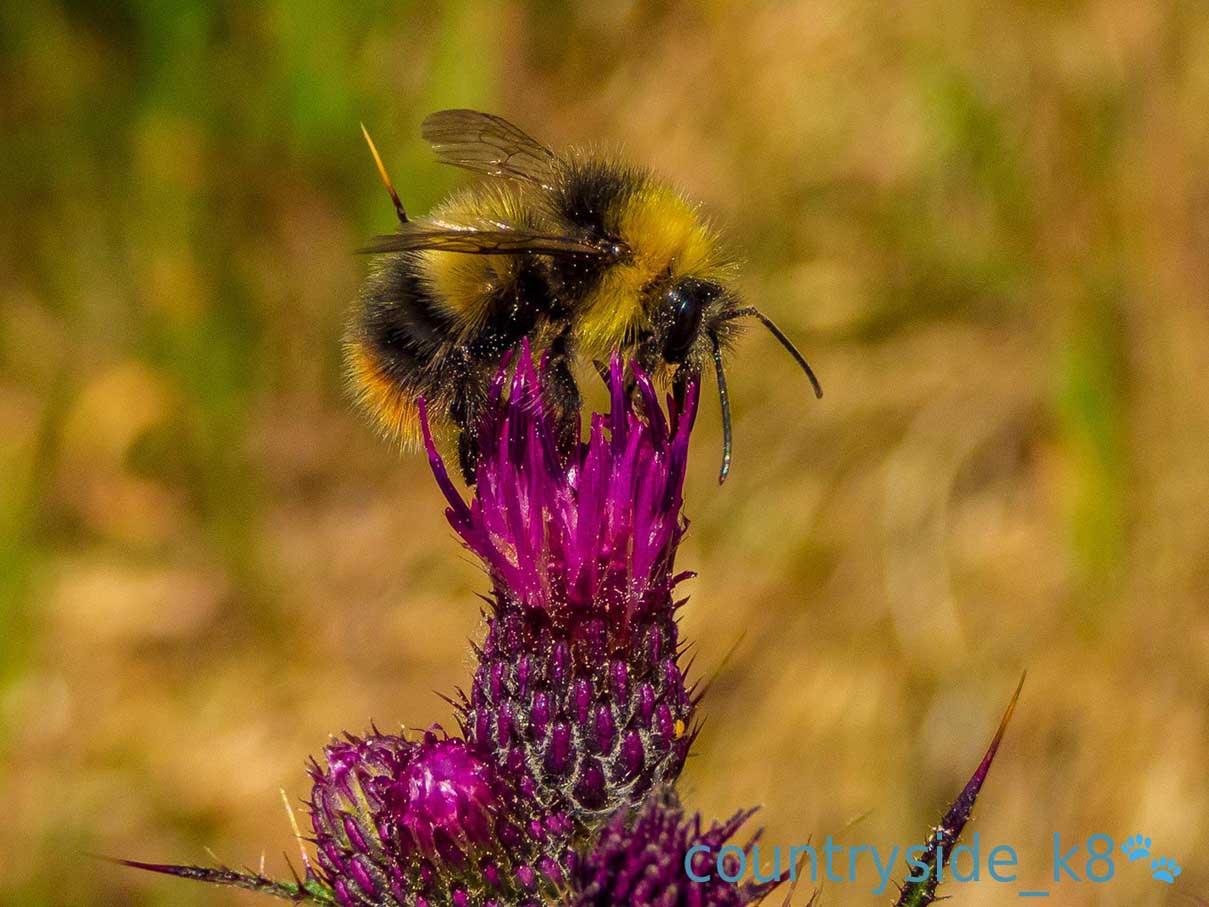
Early Bumblebee
Early Bumblebee
Latin name: Bombus pratorum
The Early Bumblebee is a small species, with a reddish-orange tail which can vary in hue and size. It has distinctive lemon-yellow bands on its thorax and abdomen, though the abdominal stripe can get lost or reduced in workers. Males can often be extensively yellow, including very obvious yellow facial hairs. In older specimens the tail colouring may be less striking as the hairs tend to become dirty white.
The Early Bumblebee is one of the most common in Britain and as the name suggests, it is a spring specialist, being one of the earliest bumblebees to emerge from hibernation each year.
The queens emerge from hibernation early in the year, between March and May and the males can be seen from April or May.
The Early Bumblebee isn’t picky about where it gets its nectar from and is known to visit more than 140 different species of flower.
Early Bumblebees nest in colonies using the old nests of small mammals, old birds nests, bird boxes or holes in trees. A nest usually contains fewer than 100 workers. The Early Bumblebee can have two or three colonies a year. The nests are shorter lived than other bumblebee nests averaging just 14 weeks.
A very common species all over Britain in all kinds of habitats.
Created: 5 October 2018 Edited: 5 October 2018
Secrets of Shaly Dingle
Own label and private label building products
We produce, brand and supply for some of the biggest names in the industry. Read more...


